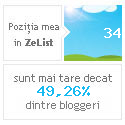Nouns, the names of things, can alter words linked with them, in particular words such as verbs and adjectives that provide information about them. Such changes vary between different languages. In Norwegian the main changes reflect the noun’s gender, its number and its ‘particularity’.
Gender: Norwegian nouns have three genders: masculine, feminine and neuter. Over half of all nouns are masculine, less than a quarter are feminine and the rest are neuter. Feminine nouns have a curious status: in most cases (there are a few exceptions – see below for some examples) they can be treated as masculine according to the inclination of the speaker.
Number: Most nouns have a singular and a plural form, depending whether or not the noun refers to one or more than one item.
‘Particularity’: A noun has ‘particularity’ if it is singled out in some way, in which case it takes the definiteform, indicated by ‘the’ in English and a suffix in Norwegian. If it is not singled out it takes the indefinite form, signalled in English in the singular by the indefinite article, ‘a’ or ‘an’, and en ei or et in Norwegian.












Bună ziua! Ai fost capabil să execute toate opțiunile acestui portal de tine sau ai cerut ajutor?